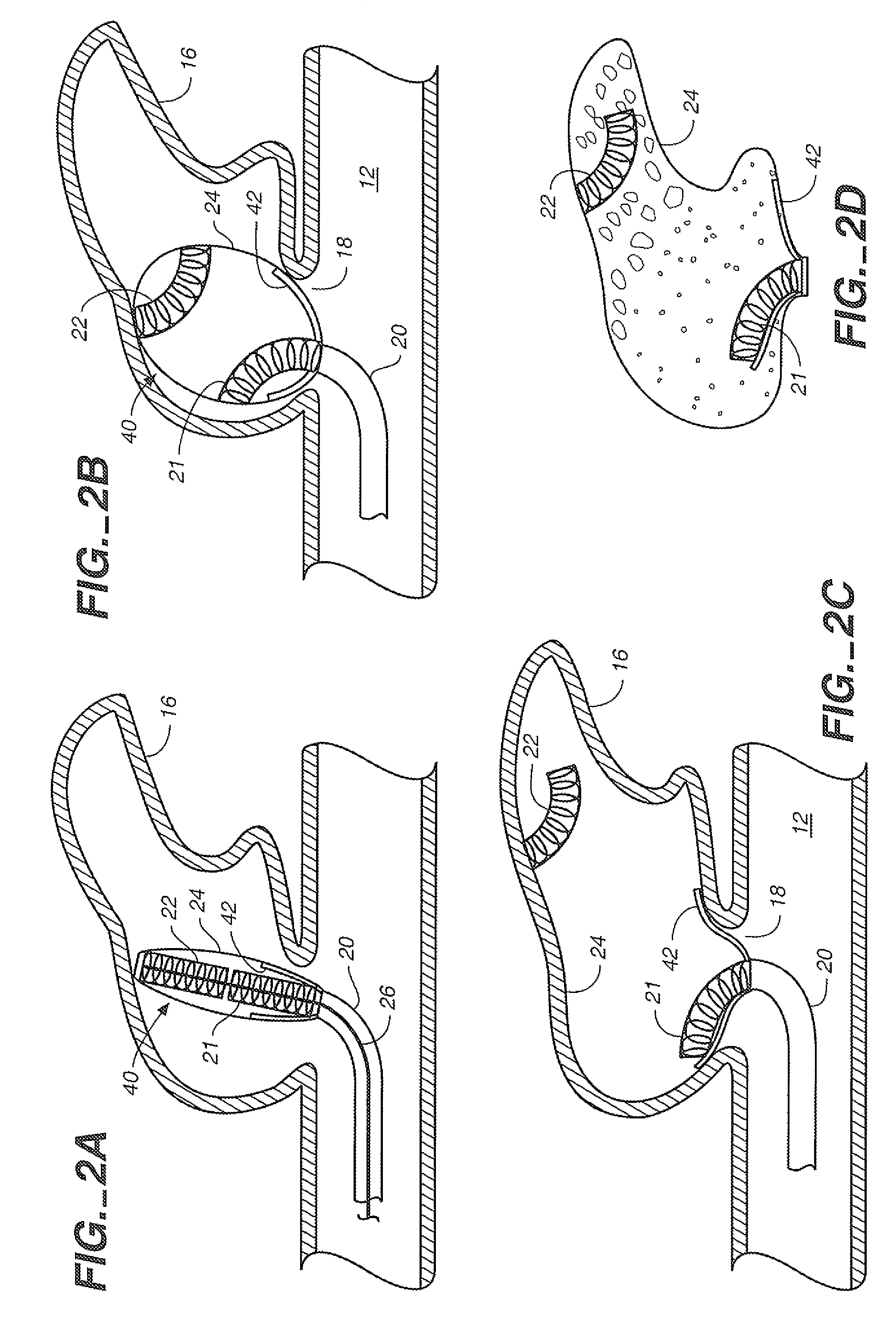Expandable body cavity liner device
a vascular cavity and expandable technology, applied in the field of vascular cavity liners and vascular cavity neck bridges, can solve the problems of increased internal pressure, increased risk of overfilling of the sac, and consequent migration of embolic agents into the parent vessel, and achieves low internal pressure, low elasticity, and low yield strength
- Summary
- Abstract
- Description
- Claims
- Application Information
AI Technical Summary
Benefits of technology
Problems solved by technology
Method used
Image
Examples
Embodiment Construction
[0021]FIGS. 1A-1C illustrate a portion of an aneurysm treatment device 10 in a vessel 12 which has an aneurysm 14 therein, and thus illustrate the general context of the present invention. Though the embodiments discussed herein are discussed in conjunction with an aneurysm, it will be appreciated that they can be used in substantially any vascular cavity or other bodily cavities. Aneurysm 14 is defined by aneurysmal sac 16 and neck 18. Device 10 includes, in the embodiment illustrated, delivery catheter 18, a pair of extender coils 21 and 22 and an expandable liner 24 (aneurysm liner sac). Delivery catheter 20 has a proximal end that extends proximally to a position where it is manipulable by an operator. The distal end of catheter 20 is releaseably connected to the liner 24 and coil 21. Coils 21 and 22 can either be attached to the liner or catheter, or unattached. In addition, there can also be one or more coils disposed between coils 21 and 22 and axially aligned therewith.
[0022...
PUM
 Login to View More
Login to View More Abstract
Description
Claims
Application Information
 Login to View More
Login to View More - R&D
- Intellectual Property
- Life Sciences
- Materials
- Tech Scout
- Unparalleled Data Quality
- Higher Quality Content
- 60% Fewer Hallucinations
Browse by: Latest US Patents, China's latest patents, Technical Efficacy Thesaurus, Application Domain, Technology Topic, Popular Technical Reports.
© 2025 PatSnap. All rights reserved.Legal|Privacy policy|Modern Slavery Act Transparency Statement|Sitemap|About US| Contact US: help@patsnap.com



